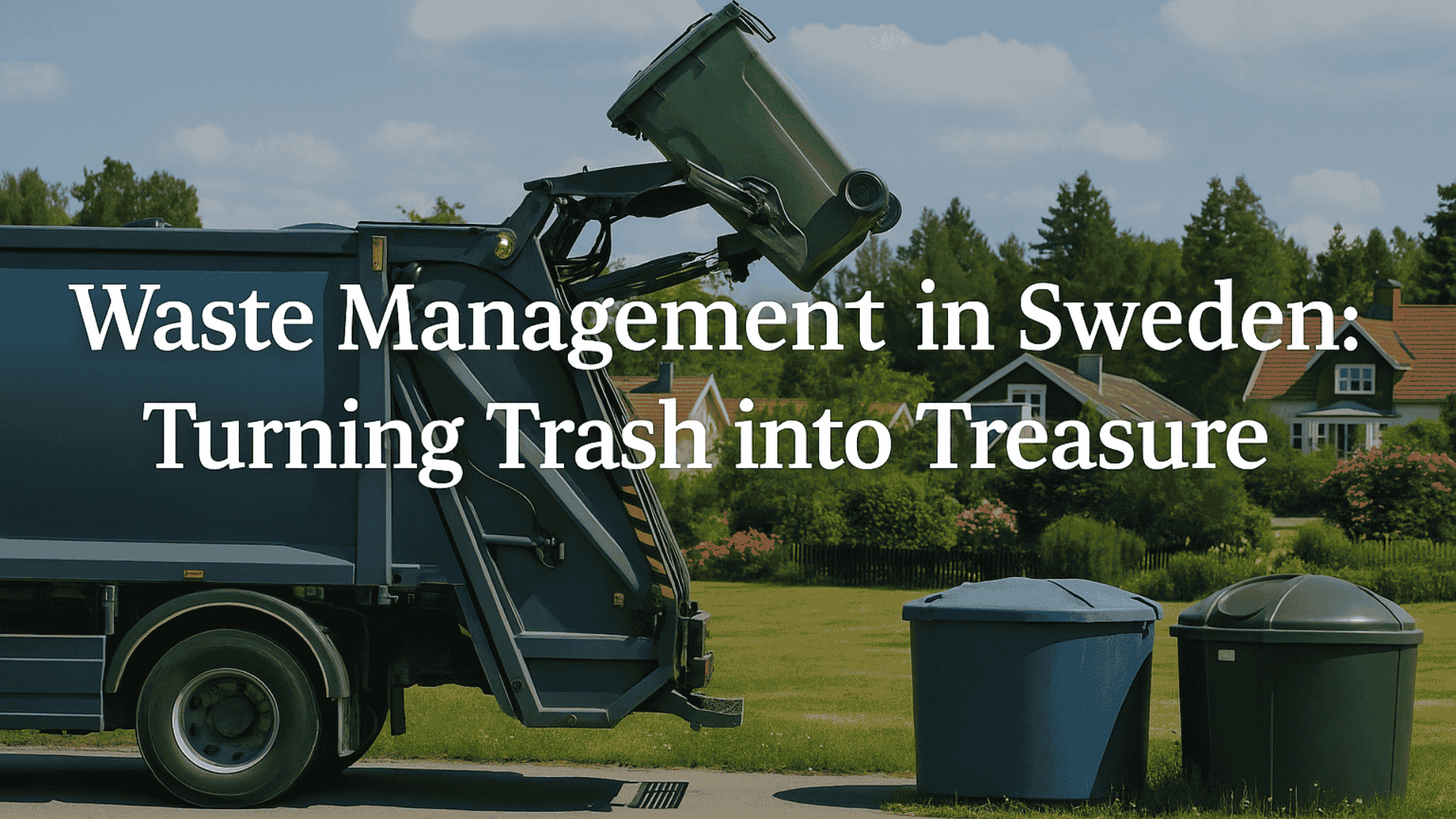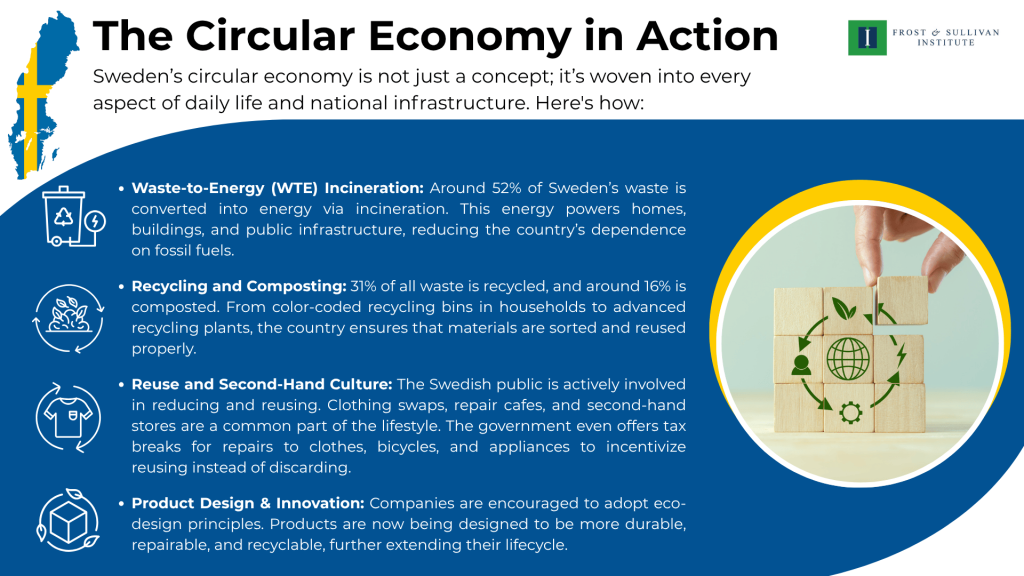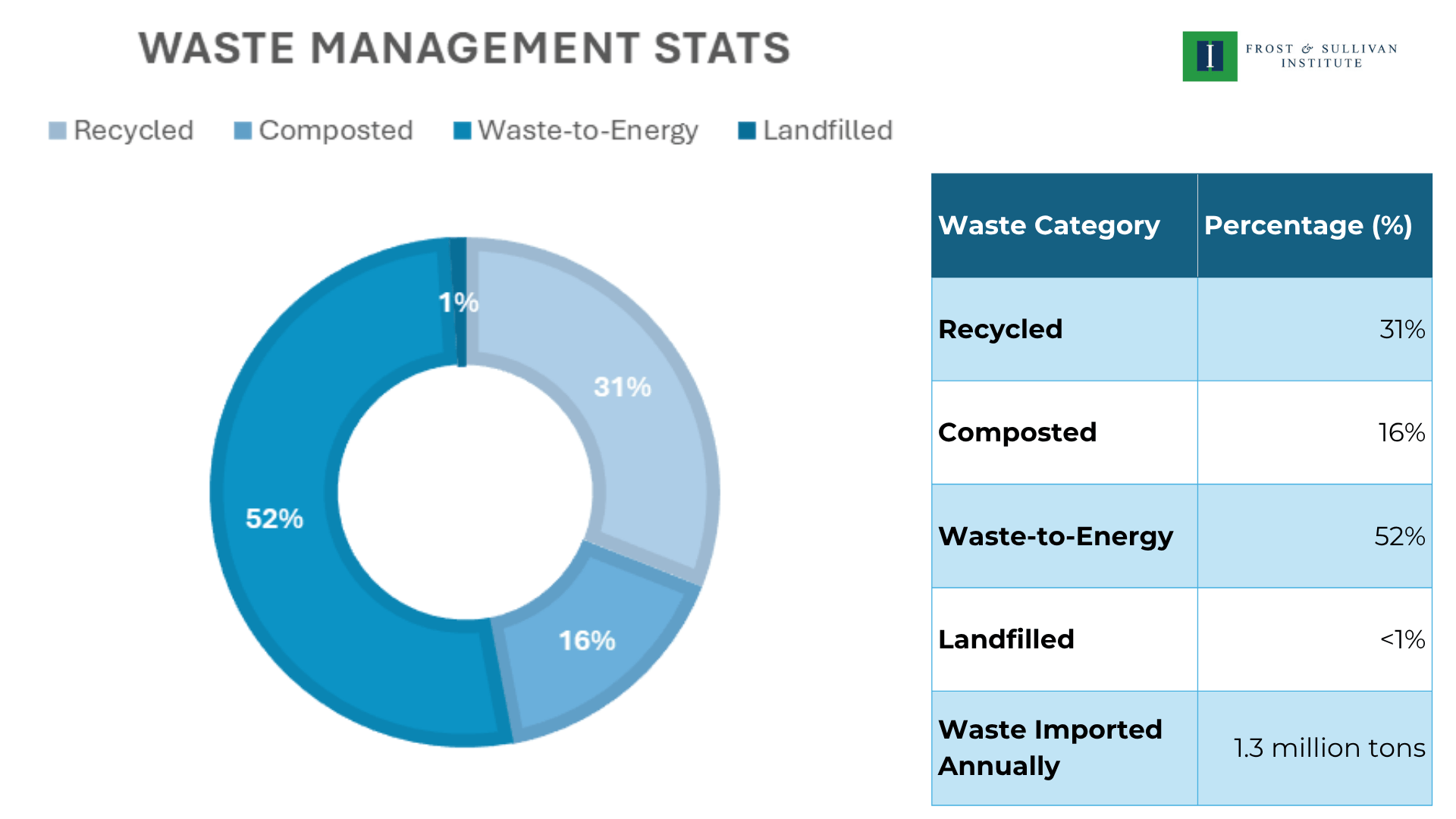
15 Jul Waste Management in Sweden: Turning Trash into Treasure
In a world struggling with mounting landfills and unsustainable consumption, Sweden stands out as a global leader in redefining waste not as a problem, but as a valuable resource. Central to this transformation is the concept of the circular economy, an economic model that prioritizes the continual use of resources by designing out waste, keeping products and materials in use, and regenerating natural systems. Unlike the traditional linear model of ‘take, make, dispose,’ a circular economy emphasizes repair, reuse, recycling, and innovation in production and consumption. Sweden has made this approach the cornerstone of its national environmental and economic strategy, with an ambitious goal to become one of the first fossil-free welfare nations by 2045.
As the country works toward its climate goals, being one of the most efficient countries in terms of waste management, the circular economy is not just a policy framework but a societal mindset that aligns environmental integrity with economic opportunity. Sweden’s waste management system is so effective that the country now imports waste from other nations, not because it lacks garbage, but because its circular economy thrives on turning trash into valuable resources. This blog explores how Sweden became a global leader in waste management, the role of its circular economy model, the positive environmental impact, key data points, and the policies and best practices that have enabled this transformation.
The Swedish Waste Management Revolution
Sweden’s waste management success didn’t happen overnight. It’s the result of decades of planning, public awareness, and policy innovation. Today, less than 1% of Sweden’s household waste ends up in landfills. By burning trash, 52% is converted into energy, and the remaining 47% gets recycled. It’s an astonishing achievement when compared to global waste averages, many developed countries still landfill more than 30% of their waste.
At the heart of this success is Sweden’s circular economy model, a system designed to minimize waste by reusing, repairing, refurbishing, and recycling existing materials and products for as long as possible. This approach contrasts sharply with the traditional linear economy, which follows a ‘take-make-dispose’ model.


Importing Waste: A Sign of Success
Sweden’s waste-to-energy plants have become so efficient that the country doesn’t produce enough waste to meet their energy demands. As a result, it imports over 1.3 million tons of waste annually from countries like the UK, Norway, and Ireland. This imported waste is burned in high-tech incinerators, which capture emissions and generate electricity and heat for Swedish homes. Far from being a negative reflection, this phenomenon shows just how successful and advanced Sweden’s waste infrastructure is in transforming trash into energy while maintaining environmental integrity.
Environmental & Social Impact
The impact of Sweden’s waste management model extends beyond environmental sustainability:
- Greenhouse Gas Emissions: The efficient waste-to-energy systems significantly reduce methane emissions that would otherwise come from landfills.
- Energy Production: Waste incineration provides heat to over 1 million homes and electricity to about 250,000 homes.
- Job Creation: The recycling and repair industries create green jobs, fostering both environmental and economic growth.
- Public Participation: Education campaigns and accessible recycling points ensure citizens are active stakeholders in the system.
Key Policies Driving Success
Sweden’s achievements are rooted in robust and progressive policies:
- Landfill Ban (2005): Sweden banned the landfilling of organic and combustible waste, forcing a shift to recycling and energy recovery.
- Producer Responsibility Laws: Producers are legally responsible for collecting and recycling packaging materials, electronics, batteries, and more.
- Pay-As-You-Throw Schemes: Households pay for waste collection based on the amount and type of waste they produce, encouraging reduction and sorting.
- Tax Incentives: Repairs of household items are tax-deductible, making sustainable consumption more affordable.
- Eco-Municipalities: Over 100 municipalities have committed to sustainability goals, many focused on zero-waste targets.
Best Practices to Learn From
Countries around the world can draw lessons from Sweden’s best practices:
- Invest in Infrastructure: Modern recycling and waste-to-energy facilities are crucial to address the challenge of waste management.
- Educate the Public: Citizens must understand how and why to sort waste as the first step to reduce pollution.
- Policy Alignment: A country must adopt strong, consistent policies that incentivize sustainability and encourage citizens to manage waste.
- Encourage Innovation: Support startups and companies building sustainable products and services to recycle waste and reduce the amount of waste in landfills.
- Promote a Repair Culture: Shift cultural norms away from disposability and promote reusing the products that we already own is an important step to minimize waste and manage it better.
Sweden’s waste management model is a global benchmark for sustainable living. By embedding circular economy principles, encouraging public participation, and enacting forward-thinking policies, the country has turned waste into a resource, pollution into energy, and trash into treasure.
As climate change accelerates and urban waste rises, the Swedish model offers not just hope, but a practical roadmap for the rest of the world to follow. If waste is the symbol of modern excess, Sweden shows us that it can also be the foundation of a cleaner, greener future.
Blog by Shreya Ghimire,
Research Analyst, Frost & Sullivan Institute
